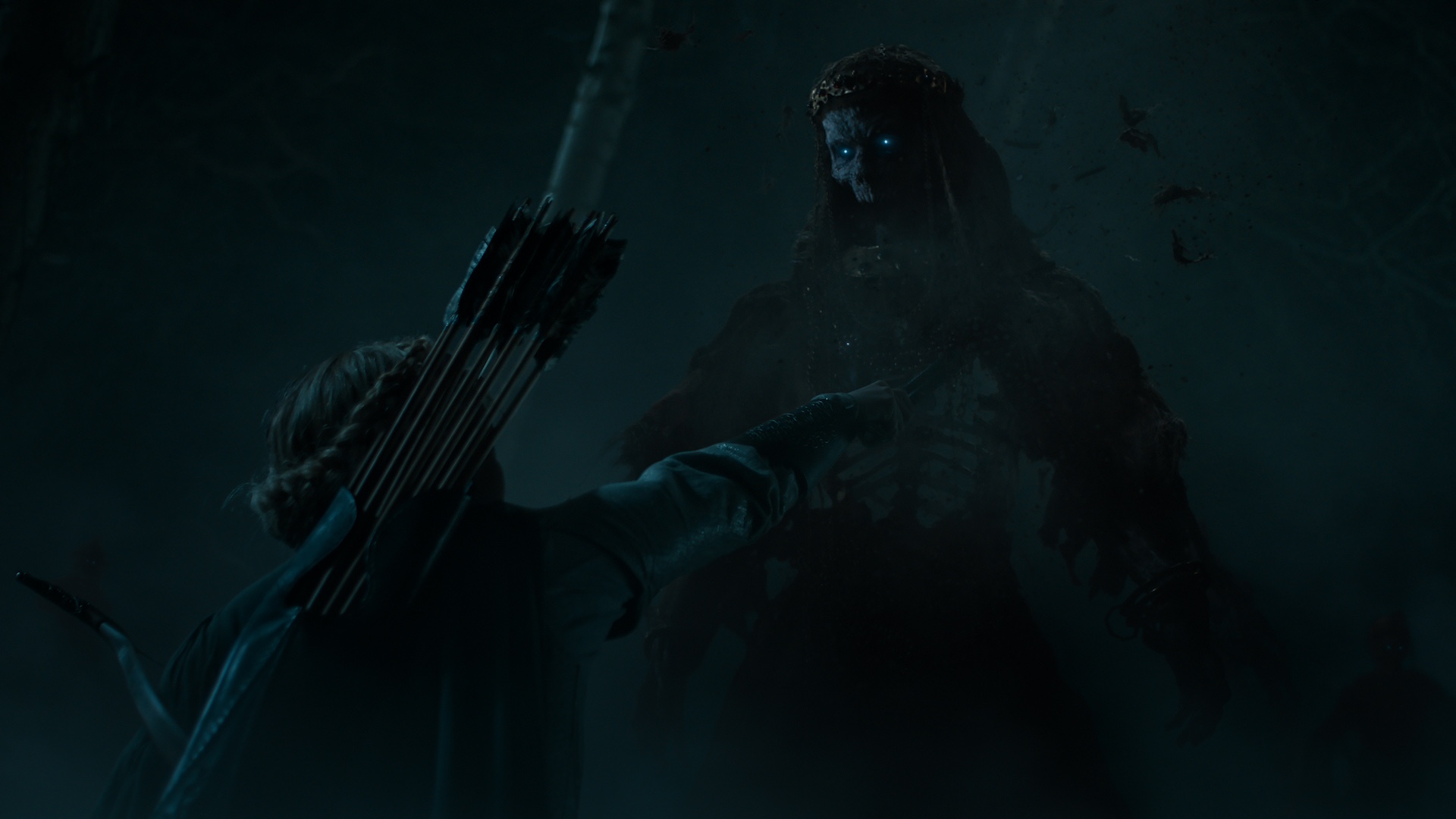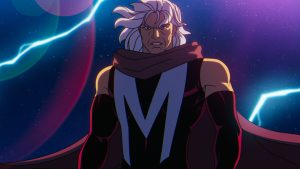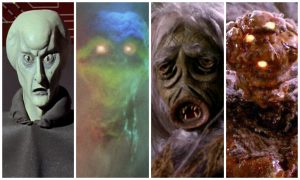
This article contains spoilers for The Lord of the Rings: The Rings of Power season 2 episode 4.
The Rings of Power season 2 episode 4 features more creatures and characters from The Lord of the Rings canon than anything we’ve seen so far. The episode is full of Tolkien creations, from mysterious characters Tom Bombadil the Eldest and Goldberry the River-daughter, to an Ent and Entwife, a desert version of sinister tree Old Man Willow, and a bog monster similar to the Watcher in the Water who guards the gates of Moria. But the scariest creatures we meet in this episode are surely the Barrow-wights, the glowy-eyed corpse-monsters that attack Elrond, Galadriel and their troops.
The Barrow-wights appear in The Lord of the Rings alongside Tom Bombadil, though in The Rings of Power they are moved into separate storylines. They are possessed corpses that guard their own tombs, the barrows that give them their name. They are located between the Shire and Bree; Frodo, Sam, Merry, and Pippin travel out of the Shire and through the Old Forest where they encounter Old Man Willow and are rescued by Bombadil, then after staying at Bombadil’s house for a couple of nights they have to cross the Barrow-downs to reach the main road to Bree, where they get caught by a Wight and Tom Bombadil has to rescue them.
The geography of the Barrow-downs in the books is most likely inspired by the history and geography of the south of England. In real life, the “Downs” are rounded, grass-covered chalk hills in southern England, usually divided into North and South Downs, which are very popular with walkers. About 35 miles west of the South Downs is a little historic site you may have heard of called Stonehenge. Stonehenge is flanked by a number of burial mounds, or barrows. Most are rounded Bronze Age burials for kings or wealthy leaders, while some are longer and older Neolithic group burials.
When Frodo gets lost on the Barrow-downs in The Fellowship of the Ring, he finds himself surrounded by fog, with two huge standing stones “towering ominous before him and leaning slightly towards one another like the pillars of a headless door.” Panicked and unable to find his friends, Frodo runs around in the fog until he finds himself right up against a large barrow, and a voice from underground says, “I am waiting for you!” An icy grip seizes him and Frodo blacks out, waking up imprisoned inside the barrow itself alongside Merry, Pippin, and Sam, who are all unconscious. It seems pretty clear that the landscape Tolkien describes here is inspired by both Stonehenge and the many other standing stones and stone circles found across the British Isles and Brittany in Northern France, often in the near vicinity of barrows.
The Barrow-wights themselves, however, are most strongly inspired by Norse mythology and the legends told in Old Norse sagas. The Scandinavian sagas were written in the mid and later medieval periods, possibly based on earlier oral histories, in several different genres. These are: Kings’ sagas, which told stories of kings of Sweden and Norway; Íslendingasögur, which tell stories about early settlers and colonists in Iceland; contemporary sagas, which tell story from their own contemporary or near-contemporary history; chivalric sagas, which might be translations from French chansons de geste or Latin poems or might be original Icelandic poems; legendary sagas, covering Scandinavian myth and legend from before the settlement of Iceland, and saints’ and bishops’ sagas, which are translations of hagiographies or bishops’ lives.
Many of these sagas, especially the Kings’ sagas and and Íslendingasögur, tell stories of undead creatures. Although they are often called “ghosts” in English translations, these are not shadow-like or insubstantial, but zombie-like revenants that are literal walking corpses (when they are not shape-shifting into seals). They could even be referred to as “trolls,” a word which was sometimes used for monstrous beings in general before it started to be used for a more specific type of creature. The revenants, or wights, were sometimes called draugr, aptrgangr, or haugbúi; the last term being one which was often used for the sort that Tolkien might call a barrow-wight.
Barrow-wights, or mound dwellers, are a particular type of revenant that reside in their own tombs. Barrows, raised mounds covering a tomb that might include treasure along with the human remains, were used in various parts of Europe across several millennia, and were popular in England in the Bronze Age, and in Scandinavia in the Viking Age. The wights are often there to guard their treasure from thieves. Some will not disturb anyone if they are not disturbed themselves, while others, like Tolkien’s, are a bit more proactive and might attack anyone passing nearby. In Grettir’s Saga, for example, a barrow-wight called Karr the Old sends up flames from his barrow to frighten away the locals. Grettir the outlaw heads over to the barrow to steal the treasure and fights Karr, defeating the wight by cutting off its head and placing the head by its rear end, a common solution to the problem.
Another example that may have been particularly influential on Tolkien is a king from The Saga of Hromund Gripsson called Thráinn. Thráinn was not, as Hobbit fans might think, a Dwarf, but an undead witch-king with a magic sword called Mistletoe. The hero Hromund fights and defeats Thráinn, burns his body, and takes the magic sword.
In Norse mythology, mound dwellers or barrow wights are undead, that is, they are the dead person, reanimated and even more monstrous than they often were when they were alive. In Tolkien’s lore, they are slightly different. Tom Bombadil tells the Hobbits that after the Númenorean kings whose bodies lie in the barrows had been buried for a long time, “A shadow came out of dark places far away, and the bones were stirred in the mounds. Barrow-wights walked in the hollow places with a clink of rings on cold fingers, and gold chains in the wind.” This seems to imply that the Wights are not the kings themselves, but some kind of shadowy evil spirit inhabiting their bones.
After he has rescued the Hobbits from the Wights, Bombadil engages in a bit of looting, piling up all the treasure from the mounds and making them freely available to anyone, taking a brooch for Goldberry and arming the Hobbits with swords. He apparently does this, “so the spell of the mound should be broken and scattered and no Wight ever come back to it,” which again implies that the Wights are some kind of evil spirit that has come to the mounds and inhabited the kings’ corpses, rather than being a reanimation of the kings themselves.
Elrond says in the Council of Elrond that they are known by many names, but does not elaborate further. Partly thanks to the similarities with The Saga of Hromund Gripsson, one popular interpretation is that the leader of the Nazgûl, the Witch-King of Angmar, sent these evil spirits to take over the dead kings and cause trouble. The taking of the swords, as well as echoing the fate of Thráinn and his magic sword, also brings the story full circle as it is one of these swords Merry uses to stab the Witch-King so that Éowyn can kill him in the Battle of the Pelennor Fields later on.
Tolkien wrote a poem about Tom Bombadil, his wife Goldberry, and a series of creatures including Old Man Willow and a Barrow-wight, eventually published in The Adventures of Tom Bombadil in 1962, way back in the 1930s, long before he started work on The Lord of the Rings. In the poem, the Barrow-wight comes out of his barrow and lurks in Bombadil’s house to try to catch him, something not outside the bounds of possibility for Scandinavian mound dwellers as well, though when he wrote the Wight into The Lord of the Rings it is more typically lurking in its own barrow. In The Rings of Power, they are wandering freely in the woods and Galadriel seems to recognize them as “Barrow-wights” despite encountering them outside of their barrows, but considering Tolkien originally wrote them coming into Bombadil’s house, that does not contradict his version of these creatures.
The encounter with the Barrow-wights in The Lord of the Rings is a wonderfully creepy scene that it would be lovely to see on screen at some point. The scene as written would not fit into the story of Galadriel and Elrond so well – they would be less vulnerable to this kind of attack than four Hobbits in the first place, and the slow, creeping horror of a long arm inching its way towards an unconscious Sam would need more time to build than this episode could give it. Elrond or Galadriel would also be rather more experienced than Frodo when it came to chopping off the undead arm, something that is unusually active for Frodo, but just a normal Tuesday for Elf warriors. But it is still fun to see the Barrow-wights in all their gory glory, and you never know, perhaps this will not be the last time they extend their deathly hands.
New episodes of The Lord of the Rings: The Rings of Power season 2 premiere Thursdays on Prime Video, culminating with the finale on Oct. 3.
The post The Rings of Power: The Real World History of LOTR’s Barrow-Wights appeared first on Den of Geek.




